Crypto, Blockchain & Security Token in 2021
Energy Consumption
The beginning of the year was dominated by news about ESG concerns over the environmental footprint of Bitcoin and other cryptocurrencies. Keeping the Bitcoin network up and running consumes more energy than small countries, such as Finland. The Frankfurter Allgemeine Zeitung (FAZ), even dubbed Bitcoin as “harmful” and there was talk of a “dirty currency”. Especially currencies that use the proof-of-work mechanism were part of this discussion. According to Professor Philipp Sandner, a well-known crypto researcher, the most important question is not whether Bitcoin uses a lot of electricity, but what kind of electricity is used for it, green or brown electricity. “Today, it’s already the case that more than 50 percent of the electricity consumed by Bitcoin is green, and that number is rising” Sandner said. “The problem is not Bitcoin per se, but the brown electricity that is used for it.”
First Bitcoin ETF
In Canada, the first Bitcoin ETF, named Purpose Bitcoin ETF, was successfully listed by Purpose Investments Inc. The Bitcoin ETF was approved by the Ontario Securities Commission (OSC) in February 2021. The fund tracks the performance of the bitcoin price by actually holding Bitcoin. Shortly after the market launch, the ETF is already worth Can$ 1 billion, FAZ reported. The product is one of the best performing ETFs at Purpose Investments Inc.
Non-Fungible-Token (NFT)
The NFT boom is another factor that has made this year. The NFT itself is essentially a blockchain-based token that proves you are the sole owner of a unique digital item. This time last year, NFTs were a niche. Now they’re a mainstream phenomenon. Earlier this year, celebrities and artists created a stir in the NFT space, but it was digital artist Beeple who made a splash in early March by selling a single NFT for US$ 69.3 million at a Christie’s auction, fueling the NFT boom. In 12 months, the term has not only permeated the broader masses and made ownership of digital assets a more familiar concept, but the industry has reached billions of dollars in monthly trading volume.
El-Savador
On June 9 of this year, the parliament of the Central American nation of El Salvador voted in favor of a law that would make Bitcoin the official national currency alongside the U.S. dollar, which makes it the first country to do so. Since September, Salvadorans have been able to make transfers and transactions via app. The law is historic, as no other country in the world has mandatory acceptance for payments made with BTC.
Electronic Securities Act (eWpG)
The year 2021 was also formative for security tokens and their issuance. As named in the previous blog article, the Electronic Securities Act (eWpG) came into force in Germany on June 10, 2021. Since then, companies have had the option of issuing bonds and fund units as electronic securities.
A special case of electronic securities are crypto securities, which have to be registered in a crypto securities register, which only means that they have to be kept on a forgery-proof recording system, such as a blockchain. The eWpG enables companies to issue debt securities and fund shares without a physical document. It is stipulated that electronic securities are treated as things, so that owners enjoy the same protection of ownership as in the case of securities certificates. This is a key point of the German government’s blockchain strategy and a first step towards a future in which all securities, including shares, are issued in the form of a purely digital security and take advantage of the many efficiencies of this form of representation.
All-Time-Highs
After the first all-time highs (ATH) at the beginning of the year, many other cryptocurrencies such as Ethereum (ETH), Binance Coin (BNB), Polygon (Matic) or Solana (SOL) reached new highs in November in addition to Bitcoin (BTC). The top coins achieved an annual gain to date between about 400% (ETH) and 11,000% (Matic).
In 2020, Bitcoin surpassed US$ 20,000 and reached an all-time high of nearly US$ 30,000. This year, Bitcoin exceeded expectations and reached an ATH of nearly US$ 70,000. Ethereum achieved a record price increase, from US$ 730 at the beginning of the year to US$ 4,870 in November. By the end of the year, however, these prices had fallen again by 20–30% in some cases and have been moving sideways since then.
Under the point ATH, NFTs must also be discussed again. While in the first two quarters of 2021 the market turned over US$ 2.5 billion in total transactions, the trading volume in quarter 3 was already US$ 10.67 billion, leading to an estimated total year-to-date volume of US$ 22 billion, per data from DappRadar. The NFT market is therefore flourishing.
China Crypto Ban
After China already legally banned cryptocurrency trading in 2019 and closed crypto mines in the Sichuan region in June 2021, the national government announced a crypto ban in September, banning and criminalizing all transactions. This also affects foreign services. At the same time, the Chinese government emphasized that from now on, in addition to the Sichuan region, a nationwide ban on cryptocurrency mining would apply.
The prices reacted moderately to this announcement. Bitcoin lost just 9%. One reason is that the announcement essentially contained nothing new. Crypto transactions were already banned in China before, and mining was already being fought before.
Bitcoin ETF
October saw the debut of the ProShares Bitcoin Strategy ETF in the US. It took just two days for the fund to amass US$ 1 billion, making it one of the busiest launches for an ETF ever. It is important to note that the ETF does not buy and own Bitcoin directly, as compared to the ETF from Purpose Investments Inc, but buys futures contracts, i.e. agreements to buy or sell the asset later at an agreed price.
Directly after this first Bitcoin ETF, two more, the Valkyrie Bitcoin Strategy ETF and the VanEck Bitcoin Strategy ETF, ETFs with Bitcoin futures as underlying were launched, which suggests that further ETFs tracking crypto assets will follow.
WEB 3.0
2021 was also the year in which Web 3.0 went from buzzword to mainstream. Web 3.0 aims to be the radical counter-design to the Internet as we know it today. Web 3.0 is an evolution of the Internet in which new social networks, search engines, and marketplaces are emerging that are not dominated by corporations. Instead, they are decentralized and based on blockchain and cryptocurrencies.
In Web 2.0, users create content, and companies control the content and market and monetize it. In Web 3.0, users should create, control, as well as monetize their own content.
As a prime example, Polkadot introduces a fully decentralized Internet through Parachains and lead the push into the Web 3.0 era. Parachains are unique in the Polkadot ecosystem, offering a highly scalable and responsive way to connect applications together. Instead of hosting all of its projects on one blockchain, Polkadot gives each project its own chain that runs in parallel with the rest.
Metaverse
At least since Facebook rebranded itself as Meta in October and Mark Zuckerberg emphasized bringing the Metaverse to life as an overarching corporate strategy, it was clear that the Metaverse would matter.
In the Metaverse, which is a 3D virtual online environment, users will be able to store, play games, communicate, and attend concerts or meetings. Meta has announced plans to invest a lot of capital here. And this has caused the prices of Metaverse tokens and gaming coins to literally explode. Metaverse cryptocurrencies are crypto projects that are developing a metaverse themselves. This is because, in all likelihood, there will not be just one metaverse, but many different ones that can be connected in different ways.
Numerous Metaverse and gaming tokens are based on the Ethereum blockchain — for example, MANA, SAND and ENJ. The Metaverse token MANA is a token of the virtual reality platform Decentraland. The developers have created a “Second Life”-like environment in which players can move freely via avatar. The Metaverse coin MANA is used to buy and sell virtual properties in the blockchain-based online world.




